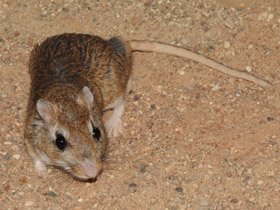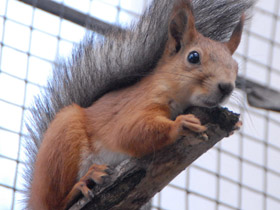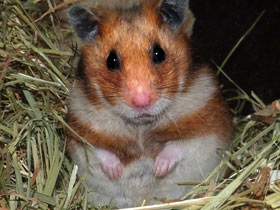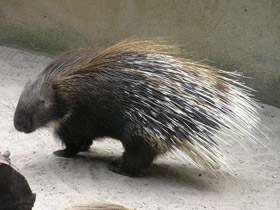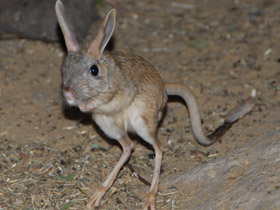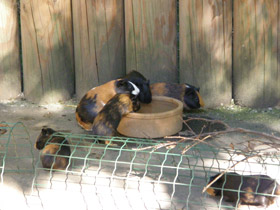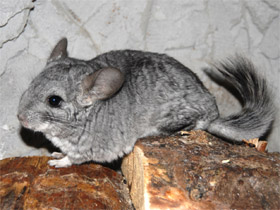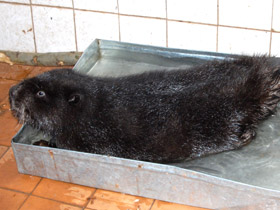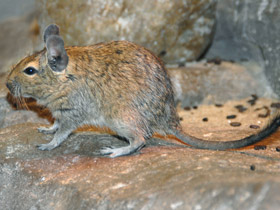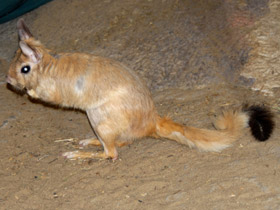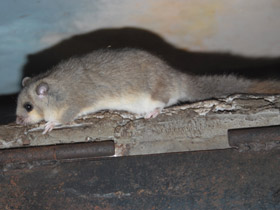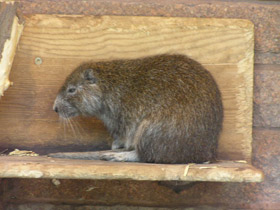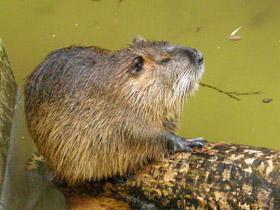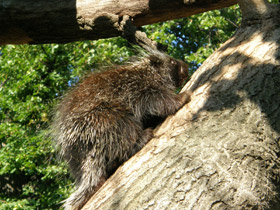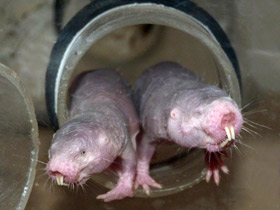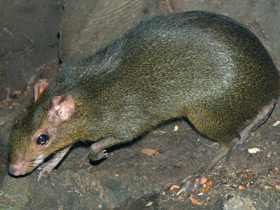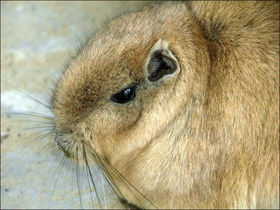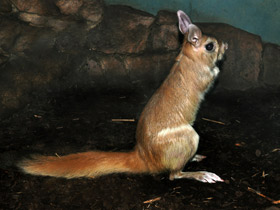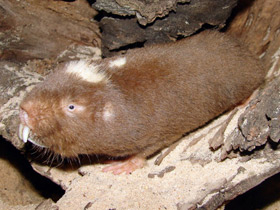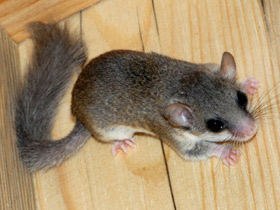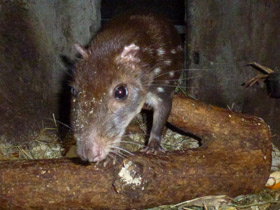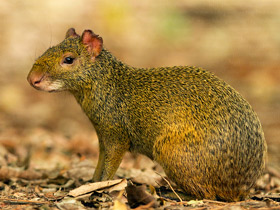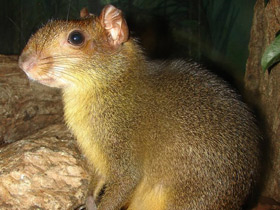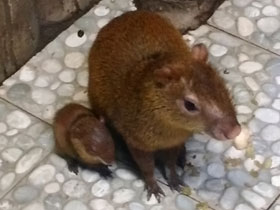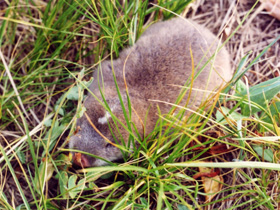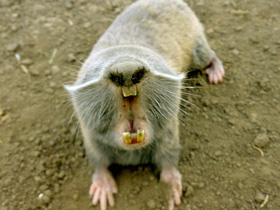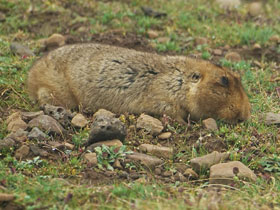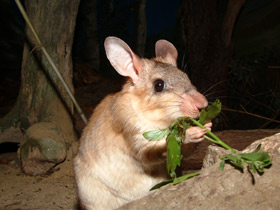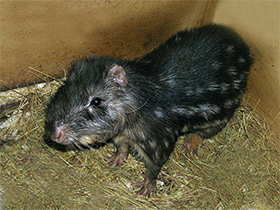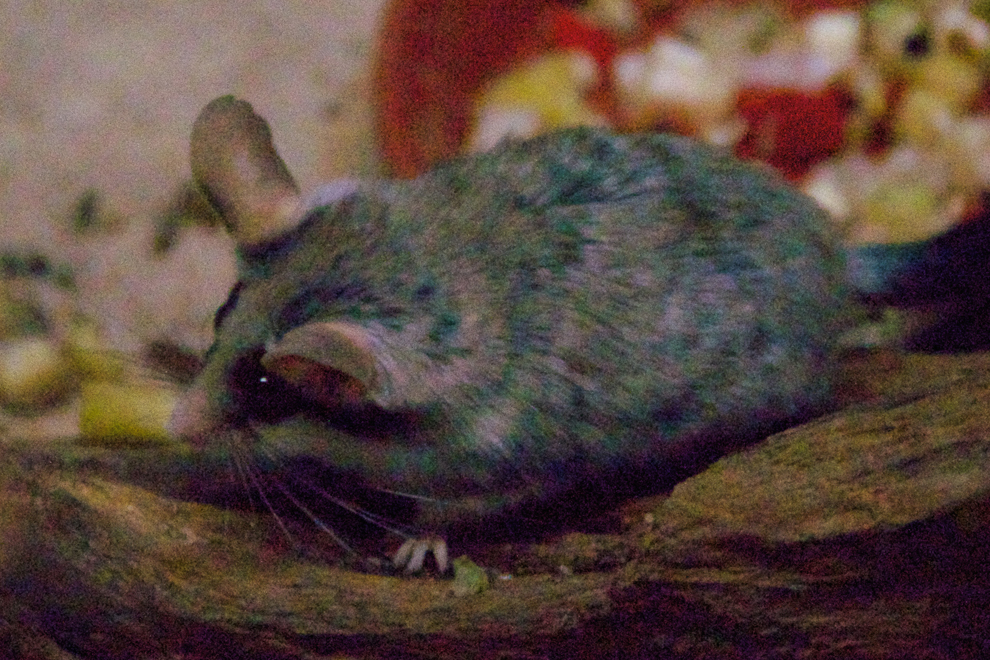The order Rodentia (Rodents)
1. Desmarest’s hutia
2. Common degu
3. Coypu, or nutria
4. Chinchillidae
5. North American porcupine
6. Domestic guinea pig
7. Patagonian mara
8. Capybara
9. Naked mole rat
10. Indian crested porcupine
11. Eurasian beaver
12. South African springhare
13. Great jerboa
14. Ring-tailed lemur
15. Mouse-like hamster
16. Muskrat
17. House mouse
18. Harvest mouse
19. Striped field mouse
20. Brown rat
21. Cairo spiny mouse
22. Gerbillinae
23. Edible dormouse
24. Chacoan mara
25. Marmots
26. Typical striped grass mouse
27. Red acouchi
28. Lowland paca
29. Harris's antelope squirrel
30. Eurasian red squirrel
31. Eastern gray squirrel
32. African dormice
33. Common gundi
34. Northern viscacha
Rodents (from Latin rodere, 'to gnaw') are mammals of the order Rodentia (/roʊˈdɛnʃə/), which are characterized by a single pair of continuously growing incisors in each of the upper and lower jaws. About 40% of all mammal species are rodents. They are native to all major land masses except for New Zealand, Antarctica, and several oceanic islands, though they have subsequently been introduced to most of these land masses by human activity.
Rodents are extremely diverse in their ecology and lifestyles and can be found in almost every terrestrial habitat, including human-made environments. Species can be arboreal, fossorial (burrowing), saltatorial/richochetal (leaping on their hind legs), or semiaquatic. However, all rodents share several morphological features, including having only a single upper and lower pair of ever-growing incisors. Well-known rodents include mice, rats, squirrels, prairie dogs, porcupines, beavers, guinea pigs, and hamsters. Rabbits, hares, and pikas, who also have incisors that grow continuously (but have two pairs of upper incisors instead of one), were once included with them, but are now considered to be in a separate order, the Lagomorpha. Nonetheless, Rodentia and Lagomorpha are sister groups, sharing a single common ancestor and forming the clade of Glires.
Most rodents are small animals with robust bodies, short limbs, and long tails. They use their sharp incisors to gnaw food, excavate burrows, and defend themselves. Most eat seeds or other plant material, but some have more varied diets. They tend to be social animals and many species live in societies with complex ways of communicating with each other. Mating among rodents can vary from monogamy, to polygyny, to promiscuity. Many have litters of underdeveloped, altricial young, while others are precocial (relatively well developed) at birth.
Rodents have been used as food, for clothing, as pets, and as laboratory animals in research. Some species, in particular, the brown rat, the black rat, and the house mouse, are serious pests, eating and spoiling food stored by humans and spreading diseases. Accidentally introduced species of rodents are often considered to be invasive and have caused the extinction of numerous species, such as island birds, the dodo being an example, previously isolated from land-based predators.
Size and range of the order
Rodents are the order with the largest number of distinct species within the mammals. In 2005, about 2277 rodent species were known,1 which constitutes 42% of all mammalian species. Their success is probably due to their small size, short reproductive period and ability to gnaw and eat a wide range of food (Lambert, 2000).
Morphology
Most rodents are short-legged, quadrupedal (moving on all fours) and relatively small. Their main common feature is the two large, continuously growing incisors in the lower and upper jaw, which are only covered with enamel on the front. On the inside, the dentine is exposed. Despite their common characteristics, rodents have developed a wide variety of shapes depending on their habitat and lifestyle.
External anatomy
Rodents range in size from dwarf species such as Mus minutoides or the spiny mouse (Micromys minutus), which often weigh less than five grams, to the capybara (Hydrochoerus hydrochaeris), the world's largest living rodent, which has a head-to-tail length of 100-130 centimetres and can weigh 50-60 kg. Other large rodents include the beaver, pacarana and paca. However, most rodents are between the size of a mouse and a rat, and are between 8 and 30 centimetres long.
Rodents normally have a thick coat of long and short hairs. Only the tail is virtually bald in some species, and there is only one species that is virtually bald over its entire body, the naked mole rat.6 In most cases, the fur colouring is of inconspicuous colours to help camouflage, usually grey or brown, while desert-dwelling rodents may be yellow. However, there are also very colourful coats, as is the case with some tropical squirrels, such as the giant squirrel.
Most rodents have tails, and only in some large or subterranean-living forms is the tail rudimentary and does not protrude outwards. In some arboreal species, the tail is prehensile,78 and in the case of beavers it acts like a rudder, flattened and bald. In many species, the tail can easily detach from the body to facilitate escape from predators;9 in most cases, the tail partially grows back.
Rodents have a nose usually short and rounded at the tip of the snout. The rinary is rudimentary or in some cases absent. The oral cavity is divided into two parts by an opening; the inner part includes the incisors and the posterior part includes the premolars and molars. The diastema in the middle allows passage to the lip. In addition, the hairy skin of the face is placed behind the incisors (Inflexum pellitum). These two adaptations prevent non-digestible foreign objects from being introduced into the mouth during gnawing. The upper lip is normally divided so that the incisors are visible even when the animal's mouth is closed. The tongue is short and compact with an obtuse tip, which never protrudes above the incisors. The taste buds, present up to the tip of the tongue, are small and thread-like. In the case of Old World porcupines, they are also somewhat enlarged and hard. In most species, the root of the tongue has three goblet-like papillae.
Many species have large cheek pouches, which reach up to the ears and are covered with hair. These pouches can be pulled from the inside out for cleaning.11 In hamsters, their openings are located at the corners of the mouth, while in Geomyoidea they are located on the outside of the cheeks.
Rodents are an integral and important link in nature's food chains, processing huge amounts of plant biomass into a more energy concentrated and valuable product of animal biomass. Rodents are the food base for a huge number of carnivorous animals, and their extermination leads to serious disturbances in the ecological balance.
Order Rodentia (from Latin, rodere, to gnaw)
- Suborder Castorimorpha:
- Superfamily Castoroidea:
- Family Castoridae: beavers;
- Superfamily Geomyoidea:
- Family Geomyidae: pocket gophers (true gophers);
- Family Heteromyidae: kangaroo rats, kangaroo mice;
- Suborder Hystricomorpha;
- Infraorder Ctenodactylomorphi:
- Family Ctenodactylidae: gundis;
- Family Diatomyidae: Laotian rock rat;
- Infraorder Hystricognathi:
- Parvorder Phiomorpha:
- Family Bathyergidae: African mole rats;
- Family Heterocephalidae: naked mole-rat;
- Family Hystricidae: Old World porcupines;
- Family Petromuridae: dassie rat;
- Family Thryonomyidae: cane rats;
- Parvorder Caviomorpha;
- Superfamily Erethizontoidea:
- Family Erethizontidae: New World porcupines;
- Superfamily Chinchilloidea:
- Family Chinchillidae: chinchillas, viscachas;
- Family Dinomyidae: pacaranas;
- Superfamily Cavioidea:
- Family Caviidae: cavies, including guinea pigs and the capybara;
- Family Dasyproctidae: agoutis;
- Family Cuniculidae: pacas;
- Superfamily Octodontoidea:
- Family Abrocomidae: chinchilla rats;
- Family Ctenomyidae: tuco-tucos;
- Family Echimyidae: spiny rats, hutias, and nutria;
- Family Octodontidae: octodonts;
- Suborder Myomorpha:
- Superfamily Dipodoidea:
- Family Dipodidae: jerboas;
- Family Sminthidae: birch mice;
- Family Zapodidae: jumping mice;
- Superfamily Muroidea:
- Family Calomyscidae: mouse-like hamsters;
- Family Cricetidae: hamsters, New World rats and mice, muskrats, voles, lemmings;
- Family Muridae: true mice and rats, gerbils, spiny mice, crested rat;
- Family Nesomyidae: climbing mice, rock mice, white-tailed rat, Malagasy rats and mice;
- Family Platacanthomyidae: spiny dormice;
- Family Spalacidae: mole rats, bamboo rats, zokors;
- Suborder Sciuromorpha:
- Family Aplodontiidae: mountain beaver;
- Family Gliridae (also Myoxidae, Muscardinidae): dormice;
- Family Sciuridae: squirrels, including chipmunks, prairie dogs, marmots.

















